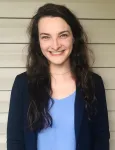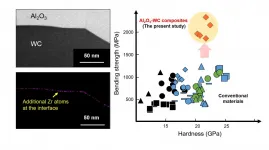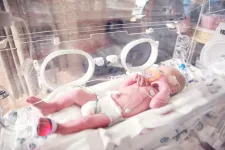The press briefing is moderated by IASLC Communications Committee Chair Dr. Anne-Marie Baird, senior research fellow at Trinity College in Dublin and president of Lung Cancer Europe (LuCE), a nonprofit that aims to provide a voice for people impacted by lung cancer in Europe. Patient Research Advocate Jill Feldman, co-founder of the patient advocacy group, The EGFR Resisters, will contribute insights from the advocacy community's perspective.
Earlier this year, Ms. Feldman co-authored an article for IASLC Lung Cancer News, in which it was noted that, "[c]ontemporaneously, the COVID-19 pandemic has exposed the already existing health inequities in underserved populations [in the United States]. It is well documented that Black patients, Indigenous People, patients of Pacific island descent, and Hispanic patients are 3.7 times, 3.5 times, 3.1 times, and 2.8 times, respectively, more like to succumb to COVID-19, than White patients.(1) These disparities cannot be explained by differences in income alone.(2) It is, therefore, very likely that the pandemic will only exacerbate lung cancer health care delivery gaps in these already disenfranchised communities."
Among Patients with Lung Cancer, Gender Disparities Exist in Virtually Every Country
Dr. Yanting Zhang, of the Department of Medical Statistics and Epidemiology at the School of Public Health, Sun Yat-sen University, Guangzhou, Guangdong Province, China, examined geographic patterns and temporal trends in lung cancer incidence from 1978 to 2012 for 43 countries across five continents (Abstract 3090).
"We sought to evaluate the effects of a birth cohort and period of time on temporal trends to better identify populations at increased risk of lung cancer and to provide clues for understanding the causal factors underlying the changing trends," he said.
Sex disparities were noted in almost all countries, with the male-to-female rate ratios exceeding 5.0 in five countries (Belarus, Turkey, Lithuania, Bulgaria, and Estonia) and ranging from 2.0 to 5.0 in 22 countries for rates of incidence of lung cancer. During 1978-2012, 19 countries showed significantly favorable trends among men, with the largest decline in incidence rates occurring in Bahrain (AAPC = -6.9 %), while 26 countries showed significantly unfavorable trends among women, with AAPCs ranging from 0.9% to 5.2 %.
"The disparity in both incidence rates and trends of a birth-cohort effect between the sexes may reflect sex differences in underlying risk factors and pathogenesis. Further etiologic research will be required to identify reasons for the elevated incidence of lung cancer among [women]," Dr. Zhang reported.
Gender and Never-Smokers Study from Women's Health Initiative
The stigma of lung cancer is strong and pervasive, and one that the lung cancer community has worked hard to counter. Research presented today by Dr. Sitapriya Moorthi from Dr. Alice Berger's lab at the Fred Hutchinson Cancer Research Center, Seattle showed that if those never-smokers with lung cancer were considered as having a separate disease, it would be the seventh-largest category of cancer deaths (Featured Poster, FP12.12). Currently, 24% of lung cancer cases in women and 17% of lung cancer cases in men are in individuals who have never smoked, the majority of which are adenocarcinomas.
Lung cancer cases in never-smokers are more common among women and are three- to four-fold more common among Asian women, Dr. Moorthi stated. "Despite this, the majority of tumor genome-wide sequencing efforts in lung cancer have been focused on patient cohorts with a smoking history," she said.
Through a unique collaboration with the Women's Health Initiative (WHI) and Dr. Garnet Anderson, Dr. Moorthi performed exome-sequencing on this cohort and describes here novel mutations, structural variants and copy number alterations in this cohort.
"Mutational analysis of our lung cancer never smokers cohort revealed that, in general, LCNS have a lower tumor mutational burden compared to their control cohort with a history of smoking. Additionally, we find that this cohort has mutations that have been previously reported in studies in never-smoker patients with lung cancer. However, the existence of novel mutations and structural alterations may offer a unique opportunity for future target identification and therapeutic intervention," she reported.
The LGBTQ+ Community and Lung Cancer Disparities Research presented at the World Conference by Dr. Yannan Li, of the Department of Medicine at the Icahn School of Medicine at Mount Sinai, reported potential worse cancer survival outcomes in the lesbian, gay, bisexual, transgender (LGBTQ), and queer population.
Previous studies have shown the LGBT population have increased smoking prevalence, predisposing this group to higher cancer risks, especially for lung cancer, along with worse survival.
Dr. Li and her research colleagues conducted a cross-sectional study using the 2018 Behavioral Risk Factor Surveillance System (BRFSS) survey data (Poster P09.19). They used a weighted estimation method for the cancer survivorship model using data from seven states regarding demographics, health risks, health care access, and cancer survival outcomes.
Of the 44,348 sample participants in the study, 1,439 self-identified as LGBT. In terms of healthcare access, 33.5% of transgender individuals did not have healthcare insurance coverage vs. 3.4% of those who identified as gay/lesbian (p < 0.0001). Meanwhile, 35% of people identifying as bisexual reported having two or more types of cancer vs.4.3% for the gay/lesbian group (p < 0.0001).
Dr. Li urged future policymakers to focus on expanding healthcare insurance coverage, promoting physical and mental wellbeing regarding cancer status, re-evaluating cancer pain management approaches, and improving programs for tobacco and alcohol control, to adapt to the needs of the LGBT population.
Another study, also using the 2018 BRFSS survey data, focused on people aged 55 to 79 years who identified as LGBT and examined lung cancer screening access. There are no previous data on lung cancer screening in the LGBT population, according to Dr. Hui Xie, of the University of Wisconsin-Milwaukee's Zilber School of Public Health, Milwaukee (Abstract 3133). With higher smoking rates and other outstanding risk factors in this population, Dr. Xie and colleagues examined the social determinants regarding receipt of lung cancer screening and explored potential solutions to eliminate health disparities in lung cancer. Dr. Xie's team identified a total of 14.37% of U.S. individuals aged 55 to 79 years old who had no personal history of lung cancer and who were eligible for lung cancer screening. Among this group, approximately 22.85% underwent screening in the past 12 months.
Respondents who were assigned males at birth, or gay/lesbians (OR: 5.30; 95% CI: 1.32-21.36; p = 0.019), in fair/poor general health (OR: 4.16; 95% CI: 1.41-12.26; p = 0.010), and had no medical cost burden (OR: 9.37; 95% CI: 2.26-38.83; p = 0.002) were significantly associated with greater odds of receiving lung cancer screening. However, those who identified as bisexual (OR: 0.13; 95% CI: 0.20-0.96; p = 0.045) and heavy drinkers (OR: 0.13; 95% CI: 0.02-0.75; p = 0.023) were associated with decreased odds of receiving screening. Respondents who were assigned female at birth, in fair/poor general health (OR: 4.26; 95% CI: 1.15-15.73; p = 0.030) and had no medical cost burden (OR: 17.00; 95% CI: 2.44-118.23; p = 0.004) were significantly associated with greater odds of receiving screening.
"Our findings point to the potential sex-related and sexual-identity disparities regarding use of lung cancer screening among U.S. respondents aged between 55 and 79 years old, using BRFSS data from 2018," Dr. Xie said. She recommends targeted educational programs are needed to address the economic burden and increase awareness for the uptake of lung cancer screening among bisexual populations, especially among those who were assigned male at birth. New Lung Cancer Screening Guidelines May Not Improve Disparities
Public health screening for lung cancer should aim to reduce disparities in mortality rates between racial and ethnic groups. However, proposed United States Preventive Services Task Force (USPSTF) Draft 2020 guidelines may inadvertently increase racial and ethnic disparities compared with the 2013 guidelines, according to research presented during the World Conference by Dr. Rebecca Landy, of the Division of Cancer Epidemiology and Genetics at the National Cancer Institute, part of the National Institutes of Health, Bethesda, MD (Abstract 3564). Landy published her research on January 5th in the Journal of the National Cancer Institute.
The draft USPSTF 2020 recommends annual lung cancer screening for individuals aged 50 to 80 who currently smoke or quit in the last 15 years, and who have a smoking history equivalent to at least one pack of cigarettes per day for 20 years or more. This expanded the age range and smoking history requirement compared to the current (2013) USPSTF recommendations, to "partially ameliorate racial disparities in screening eligibility". Neither set of recommendations considered the higher risk of lung cancer and younger ages at diagnosis among African Americans, despite smoking less than whites.
Dr. Landy and colleagues found that draft USPSTF 2020 guidelines increase eligibility for all races/ethnicities by similar levels (97% for whites vs 78% for minorities). Their empirical modeling showed the draft guidelines inadvertently increased racial/ethnic disparities in screening-prevented deaths or increased life-expectancy for each minority group. The researchers suggested broadening the eligibility criteria to additionally select individuals who would benefit most under the Life-Years From Screening-CT (LYFS-CT) model, which calculates the gain in life expectancy for an individual if they undergo screening. They showed that augmenting USPSTF criteria to include these high benefit people selected significantly more African-Americans than whites (22% vs 9%), and thus could reduce or even eliminate disparities between whites and African Americans.
This study highlighted the importance of developing eligibility criteria that identify individuals who benefit most from screening, regardless of race/ethnicity. Using prediction models such as the LYFS-CT models could reduce racial/ethnic disparities in screening eligibility. Progress Before COVID-19
Dr. Brendon Stiles, of Weill Cornell Medicine, New York-Presbyterian Hospital, New York City, reported that that short-term mortality and hospital readmission decreased in the years between 2004 and 2014, and that short-term survival improved in low-income patients. In addition to later year of diagnosis, treatment at academic centers, surgical treatment, and having private insurance each seem to improve outcomes in economically disadvantaged patients (Poster P08.04). Dr. Stiles and his co-researchers identified 242,757 patients from the National Cancer Database that featured the following demographic breakdown: 47,437 patients (49.7% female) were in the lowest income quartile, with a median age of 69 years Approximately 23% of patients were Black 65% were from metropolitan areas Most patients were clinical stage I (75%), with adenocarcinoma (43%) the most common histology "Patients with the lowest income may be slower to seek treatment, are more likely to be undertreated, and have historically had worse survival for early-stage NSCLC," Dr.Stiles reported. "We sought to determine whether early-stage NSCLC outcomes have improved over time in low-income patients, and I can report that progress has been made." Stiles also reported that treatment at academic centers, surgical treatment, and having private insurance each seem to improve outcomes in economically disadvantaged patients.
INFORMATION:
About the IASLC:
The International Association for the Study of Lung Cancer (IASLC) is the only global organization dedicated solely to the study of lung cancer and other thoracic malignancies. Founded in 1974, the association's membership includes nearly 7,500 lung cancer specialists across all disciplines in over 100 countries, forming a global network working together to conquer lung and thoracic cancers worldwide. The association also publishes the Journal of Thoracic Oncology, the primary educational and informational publication for topics relevant to the prevention, detection, diagnosis, and treatment of all thoracic malignancies. Visit http://www.iaslc.org for more information.
About the WCLC:
The WCLC is the world's largest meeting dedicated to lung cancer and other thoracic malignancies, attracting more nearly 7,500 researchers, physicians and specialists from more than 100 countries. The goal is to increase awareness, collaboration and understanding of lung cancer, and to help participants implement the latest developments across the globe. The conference will cover a wide range of disciplines and unveil several research studies and clinical trial results. For more information, visit wclc2020.iaslc.org.








